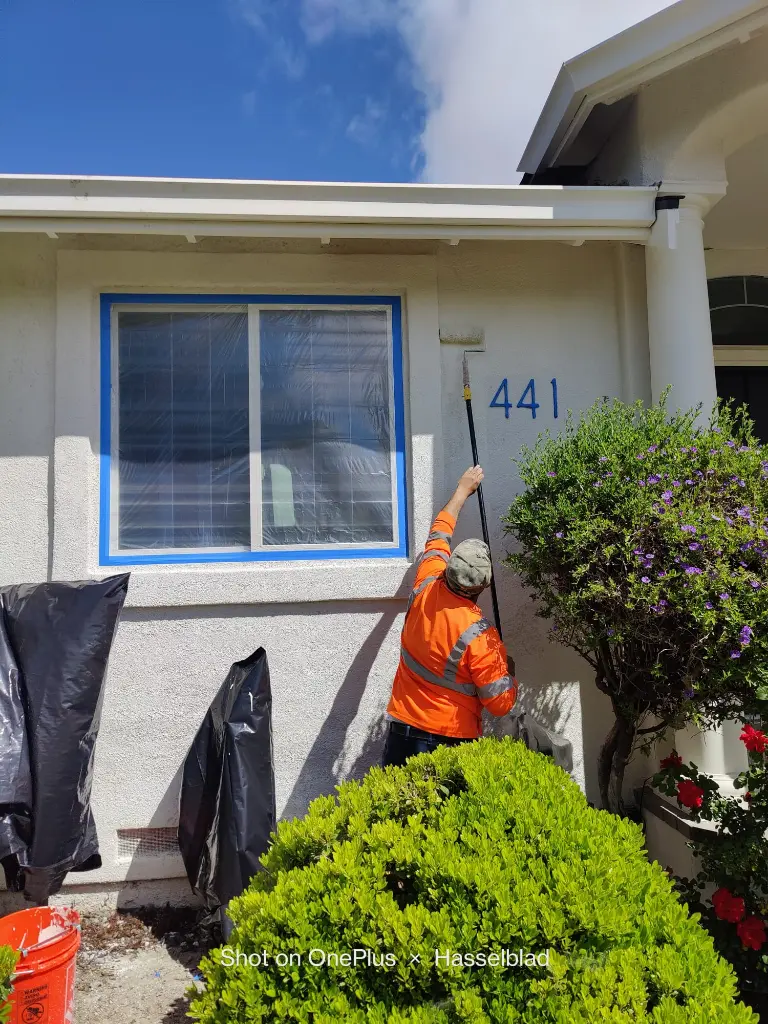Upgrading your kitchen faucet can instantly transform the look and functionality of your kitchen. Whether you’re looking to replace an outdated fixture or install a brand-new one, the process can seem daunting. However, with the right tools and a bit of know-how, you can easily tackle this project and enjoy the benefits of a fresh, modern kitchen faucet. In this comprehensive guide, we’ll walk you through the step-by-step process of kitchen faucet installation, from preparing for the job to troubleshooting common issues. Get ready to transform your kitchen with a new, effortlessly installed faucet.
Can I install a faucet?
When considering whether you can install a faucet yourself, the first step is to determine if your home warranty or local regulations allow for DIY installation. Some warranties may require that a licensed professional handle the installation to ensure coverage. Eric Goranson, a seasoned interior designer and host of the podcast Around The House, emphasizes the importance of understanding local building codes before proceeding. “In some places, a building permit might be required even for something as simple as replacing a faucet,” he notes. It’s also essential to be aware of state-specific regulations. For instance, recent legislation mandates that new faucets installed by homeowners in Vermont, Maryland, and California must be free of lead. This requirement is crucial to consider when selecting your faucet, as failing to comply could result in legal issues or the need for costly replacements down the line.
Tools and Materials Needed for Kitchen Faucet Installation
Before you begin the installation process, make sure you have all the necessary tools and materials on hand. This will ensure a smooth and efficient installation, helping you avoid any delays or frustrations. Here’s what you’ll need:
- Adjustable wrench
- Basin wrench
- Plumber’s putty
- Teflon tape
- Bucket or container
- Towels
- Hacksaw (if needed to cut pipes)
- Silicone caulk (optional)
- New kitchen faucet set
Preparing for the Installation Process
- Turn Off the Water Supply: Locate the shut-off valves under your sink and turn them clockwise to shut off the water supply to the existing faucet. If you don’t have shut-off valves, you may need to turn off the main water supply to your home.
- Clear the Work Area: Remove any items from the sink and surrounding countertop to create a clear, unobstructed workspace.
- Gather the Necessary Tools: Ensure you have all the tools and materials listed in the previous section within reach.
- Read the Manufacturer’s Instructions: Carefully review the installation instructions provided with your new kitchen faucet. This will help you understand the specific steps required for your particular model.
Removing the Old Faucet

- Disconnect the Water Supply Lines: Use an adjustable wrench to disconnect the water supply lines from the existing faucet.
- Remove the Faucet Mounting Hardware: Use a basin wrench to loosen and remove the mounting nuts or screws that secure the faucet to the sink.
- Lift Out the Old Faucet: Gently lift the old faucet out of the sink, taking care not to damage the sink or countertop.
- Clean the Sink Surface: Use a clean cloth to wipe down the sink surface, removing any debris or old plumber’s putty.
Installing the New Faucet

- Apply Plumber’s Putty: Apply a thin bead of plumber’s putty around the base of the new faucet, creating a seal between the faucet and the sink.
- Position the Faucet: Carefully lower the new faucet into the sink opening, ensuring it is centered and aligned properly.
- Secure the Faucet: From underneath the sink, use the mounting hardware provided with your new faucet to secure it in place. Tighten the mounting nuts or screws with a basin wrench.
- Attach the Water Supply Lines: Connect the water supply lines to the faucet, using an adjustable wrench to tighten the connections.
Connecting the Water Supply Lines
- Attach the Supply Lines: Connect the hot and cold water supply lines to the corresponding inlets on the faucet. Make sure the connections are tight and secure.
- Route the Supply Lines: Carefully route the supply lines to the shut-off valves or the main water supply, ensuring they are not kinked or twisted.
- Tighten the Connections: Use an adjustable wrench to tighten the connections at the shut-off valves or the main water supply.
Testing the Faucet for Leaks
- Turn On the Water Supply: Slowly turn the shut-off valves or the main water supply back on, allowing water to flow through the new faucet.
- Check for Leaks: Inspect the connections and the base of the faucet for any signs of leaks. If you find any, tighten the connections or apply additional plumber’s putty as needed.
- Test the Faucet Functions: Turn the faucet on and off, and check the water flow and temperature to ensure the new faucet is working correctly.
Troubleshooting Common Installation Issues
- Leaks at the Base: If you notice leaks at the base of the faucet, it could be due to improper sealing with the plumber’s putty. Remove the faucet, clean the surface, and reapply the putty before reinstalling.
- Difficulty Tightening the Mounting Hardware: If the mounting nuts or screws are difficult to tighten, the sink opening may be too large. Try using the provided mounting hardware or consider using plumber’s putty to create a tighter seal.
- Uneven Water Flow: Ensure the water supply lines are not kinked or obstructed, and that the shut-off valves are fully open.
- Dripping Faucet: If the faucet continues to drip after installation, check the washers and seals for any wear or damage, and replace them if necessary.
Maintenance and Care Tips for Your Kitchen Faucet
Your kitchen faucet is an essential part of your daily routine, and keeping it in top condition not only ensures smooth operation but also extends its lifespan. Here are some effective maintenance and care tips to help you keep your kitchen faucet functioning at its best.
Regularly Clean the Faucet: To maintain the appearance and functionality of your faucet, make it a habit to clean it regularly. Use a soft, damp cloth to wipe down the faucet surface, removing any dirt, grime, or water spots. Avoid using abrasive cleaners or scouring pads, as these can scratch or damage the finish. A gentle cleanser specifically designed for your faucet’s material can be used for more stubborn stains, ensuring that the faucet retains its shine and luster.
Check for Leaks: Periodically inspect your faucet for any signs of leaks. This includes checking around the base, the handle, and the spout. Even small leaks can lead to significant water damage over time, so it’s important to address them promptly. If you notice any drips or puddles, tighten any loose connections or consider replacing worn-out parts to prevent further issues.
Lubricate Moving Parts: Over time, the moving parts of your faucet, such as the handle and the pivot ball, can become stiff or difficult to operate. To keep them functioning smoothly, apply a small amount of silicone-based lubricant to these areas. This will reduce friction, prevent wear and tear, and make the faucet easier to use. Be sure to avoid petroleum-based lubricants, as they can cause damage to rubber seals and other components.
Replace Washers and Seals: Washers and seals are essential components of your faucet that help prevent leaks. However, these parts can wear out over time, leading to drips and reduced water efficiency. Regularly check these components, and replace them as needed to maintain optimal performance. If you notice a decrease in water flow or persistent leaks, it may be time to replace these parts.
By following these simple maintenance and care tips, you can keep your kitchen faucet in excellent working condition, ensuring that it continues to serve you well for years to come.
Conclusion: Enjoy Your New Kitchen Faucet!
By following this comprehensive step-by-step guide, you’ve successfully installed a new kitchen faucet that not only elevates the look of your kitchen but also operates seamlessly. The convenience and improved aesthetic of your refreshed space are a testament to your DIY skills. Take a moment to appreciate the transformation you’ve achieved—this is more than just a faucet; it’s a functional upgrade that enhances your everyday experience in the kitchen.
However, if you run into any issues along the way or feel that you need expert help to tackle other aspects of your kitchen renovation, don’t hesitate to contact Rhino Builder. Whether it’s a kitchen faucet installation or a complete kitchen remodeling project, our team of seasoned professionals is here to ensure that your vision comes to life.
We take pride in delivering high-quality workmanship and customer satisfaction with every project we undertake. So, when you’re ready for your next kitchen upgrade, give Rhino Builder a call—we’re here to make your home improvement dreams a reality.
FAQs
1. Do you need a plumber to install a kitchen faucet?
While it’s not absolutely necessary to hire a plumber to install a kitchen faucet, doing so can save time and prevent potential issues. If you’re comfortable with basic plumbing tasks and have some DIY experience, you can likely handle the installation yourself. However, if the installation involves complicated plumbing work or if you’re replacing an old faucet with a new one that has different fittings, it might be wise to consult a plumber.
2. What tools do you need to install a kitchen faucet?
To install a kitchen faucet, you’ll need a few basic tools:
- Adjustable wrench or basin wrench
- Plumber’s tape (Teflon tape)
- Screwdriver (Phillips or flathead, depending on the faucet model)
- Plumber’s putty or silicone sealant
- Bucket or container to catch any water drips
- Towels or rags to clean up spills These tools should cover most installations, but always check the manufacturer’s instructions for any specific tools required.
3. How long does it take to install a kitchen faucet?
Installing a kitchen faucet typically takes about 1 to 2 hours, depending on your experience level and the complexity of the job. This time includes removing the old faucet, prepping the sink area, and installing the new faucet. If you encounter any plumbing issues or need to make modifications, it may take longer.
4. Do you install the faucet or sink first?
Generally, the sink is installed first, followed by the faucet. Installing the faucet after the sink is in place allows for easier alignment and connection of the water supply lines. However, if you’re installing a new sink and faucet together, some prefer to attach the faucet to the sink before placing the sink into position, especially if the space under the sink is tight.
5. How do you remove limescale from faucets?
To remove limescale from faucets, you can use a mixture of white vinegar and water. Soak a cloth or paper towel in the vinegar solution and wrap it around the faucet, letting it sit for about 30 minutes. For stubborn limescale, you may need to gently scrub with a soft brush or use a toothbrush. Afterward, rinse the faucet with water and wipe it clean. If limescale is persistent, a commercial limescale remover may be necessary.







